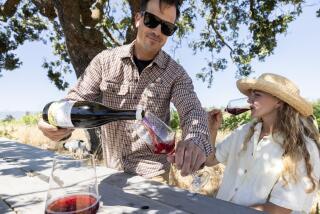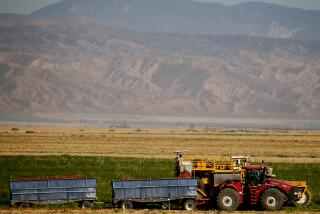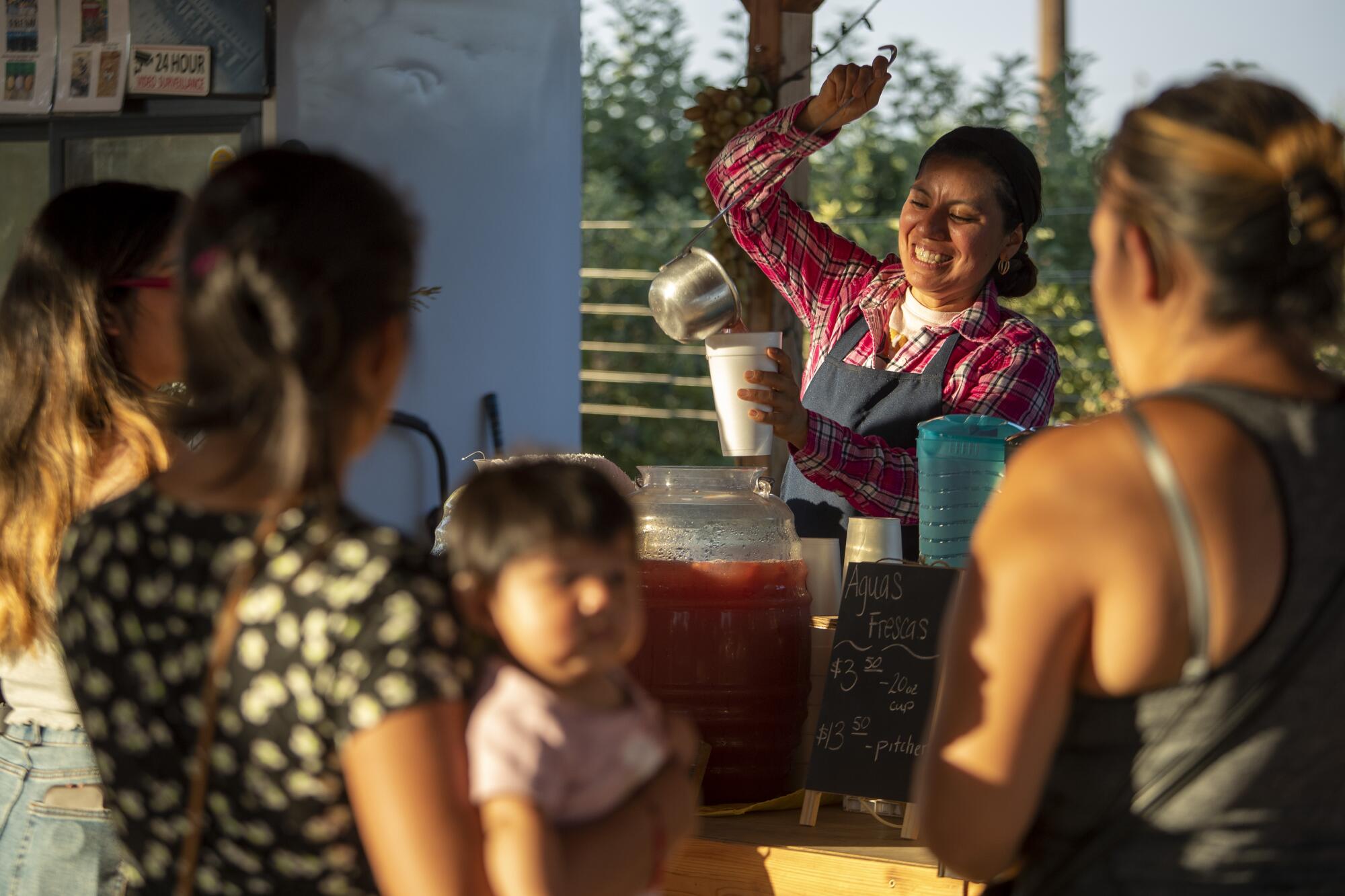
REEDLEY, Calif. — It was the middle of a heat wave, but the little roadside farm stand with its crate of round, heavy watermelons and colorful rows of nectarines — the crimson ones that are juicy, and the pale, speckled type that stay crisp — lured drivers to pull over.
Liset Garcia, 29, the owner of Sweet Girl Farms, greeted each customer with glee, and the returning ones by name, as they lingered to chat in the shade of three gnarled olive trees that mark this spot on a long country road at the foot of the Sierra Nevada.
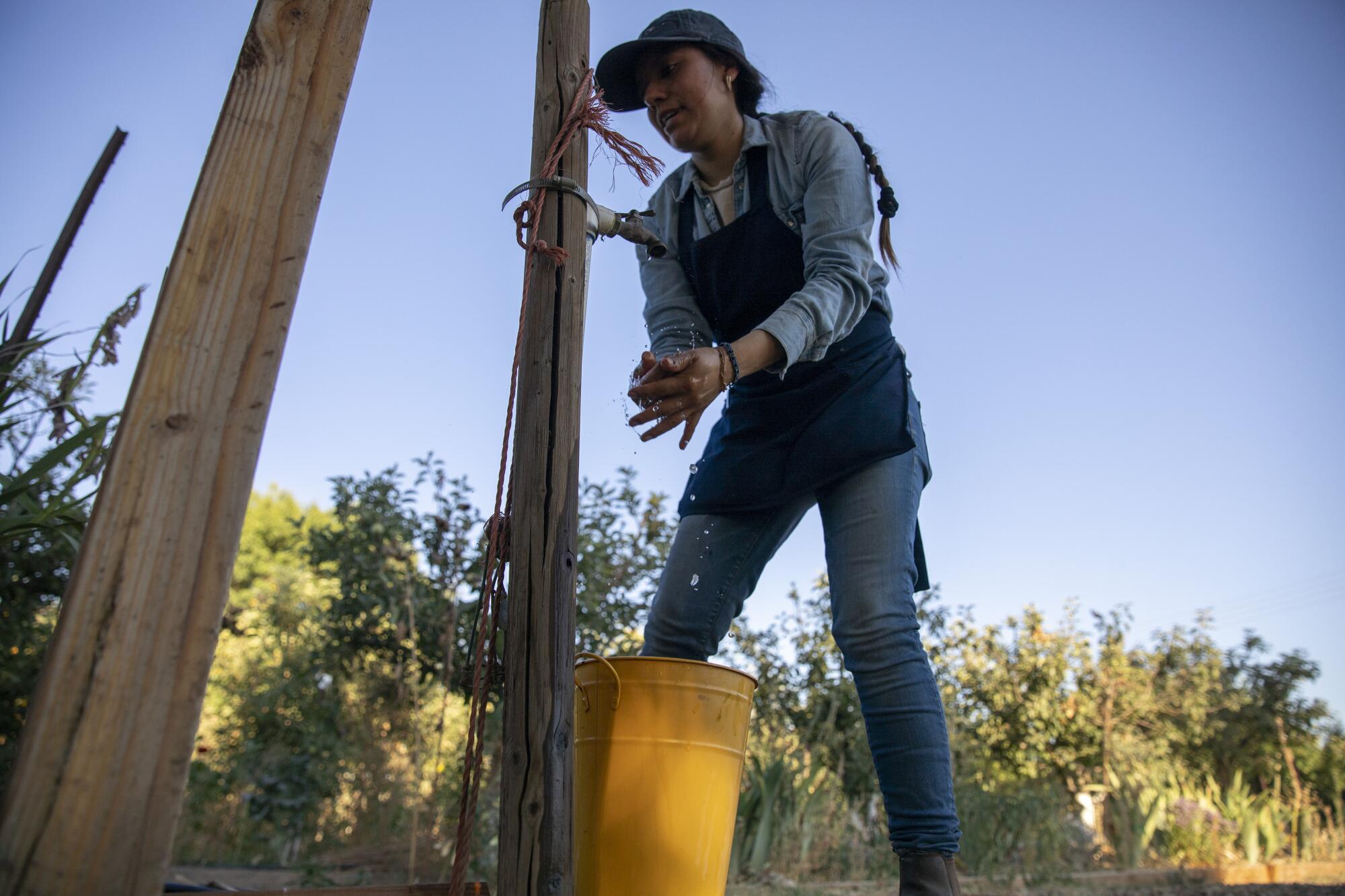
One of the few signs that anything was wrong was the four white buckets on the front porch warming water for the family’s showers that night.
The house well went dry a month and a half ago. Garcia said the drilling company told her it was a five-month wait to dig a new well, with no guarantee they would hit water.
Her parents, who grew up in Oaxaca, told her the family would survive just fine without running water.
“I was freaking out, but they laughed at me,” Garcia said.
“They’re very strong. They live every day grateful.”
At her parents’ farm, her father and brother pumped water from an agricultural well and hauled it down the street to fill a tank for household needs and Garcia’s small flower and vegetable farm. They bought the tank during the drought that ended in 2017.

That earlier drought, for all its devastation, was a slow build-up. In the Central Valley, wells went dry, jobs disappeared and entire farming communities lost running water before the rest of California was in crisis or offered help. Even then, people in a region dependent on agriculture held out hope: “If only we get snow next winter, if only we get late spring rains.”
This drought, intensified by increasing temperatures, came as quickly as wildfire and covers most of the state. Spring rain never really came, and the snowpack was gone by the end of May. Reservoirs are critically low. Deliveries to farmers from the vast system of dams and irrigation canals have been cut. A 2014 law regulating groundwater use won’t take effect for years. In the last drought, farmers pumped so much that the ground in some parts of the San Joaquin Valley sunk.
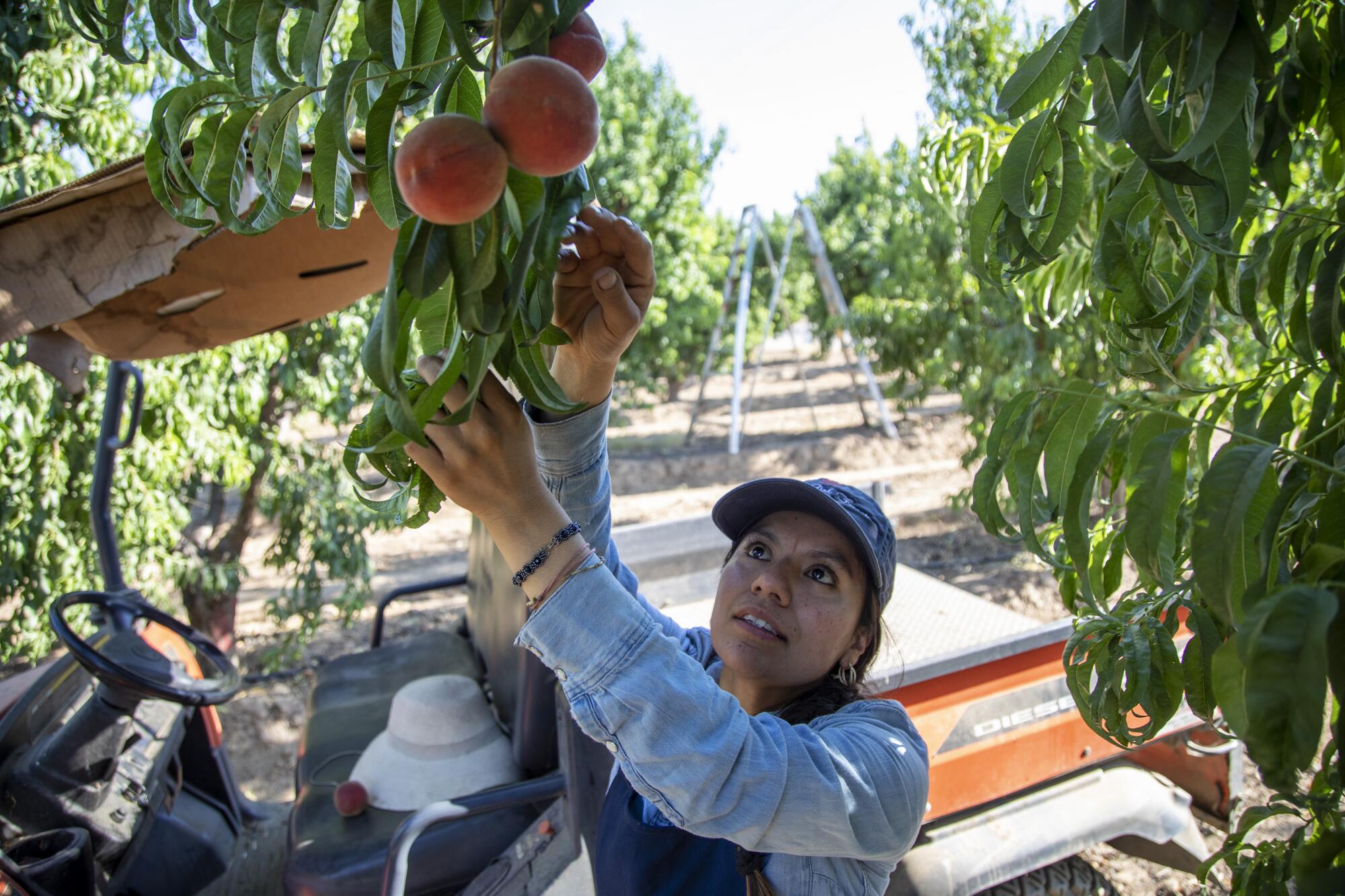
Garcia’s thoughts are on more than her own farm. She has been keeping a private video diary to record her feelings about the drought and document the changes in the world around her.
“Water is a natural resource, and we’re not recharging it. There isn’t enough water. We’re all going to die,” she said. “My mother always tells me, ‘Liset! Don’t say things like that!’ But we just came through a pandemic. Who saw that coming? It’s clear it can all end in a second.”
“I sleep good at night. Every day I put my whole heart and soul into this and I leave it all here and then I can sleep.”
— Liset Garcia, owner of Sweet Girl Farms
Still, she said, “I sleep good at night. Every day I put my whole heart and soul into this and I leave it all here and then I can sleep.”
She has a big smile and bigger eyes that she widens or scrunches or closes when she laughs, which is often. Her face moves as quickly as her thoughts. She routinely wears the plaid shirt favored by those who work in the fields and a baseball cap with a USC logo — where she got her master’s in public health.

She said she never expected to be a farmer. She grew up in L.A. Her parents picked fruit in the Central Valley and sold it at swap meets and on street corners. She went everywhere they went.
“I was the kid holding out a bag of oranges as you drove by,” she said.
She hated getting up early and being in the heat and the rain, and she always knew her parents expected her to go to college. Nonnegotiable.

By the time she was a biology student at UC Merced, her parents had bought their own farm here on the edge of Reedley, a community southeast of Fresno, known for its small farms and Mennonite quilts. She returned to L.A. for graduate school, then worked in community outreach serving expectant mothers who lacked healthcare.
She remembers seeing photos of a flower farm on social media and feeling an instant conviction that she would do that — someday.
Then, two years ago, she suffered an accident, which she doesn’t want to talk about, even to her family. She returned to her parents’ house with two severely injured hands.
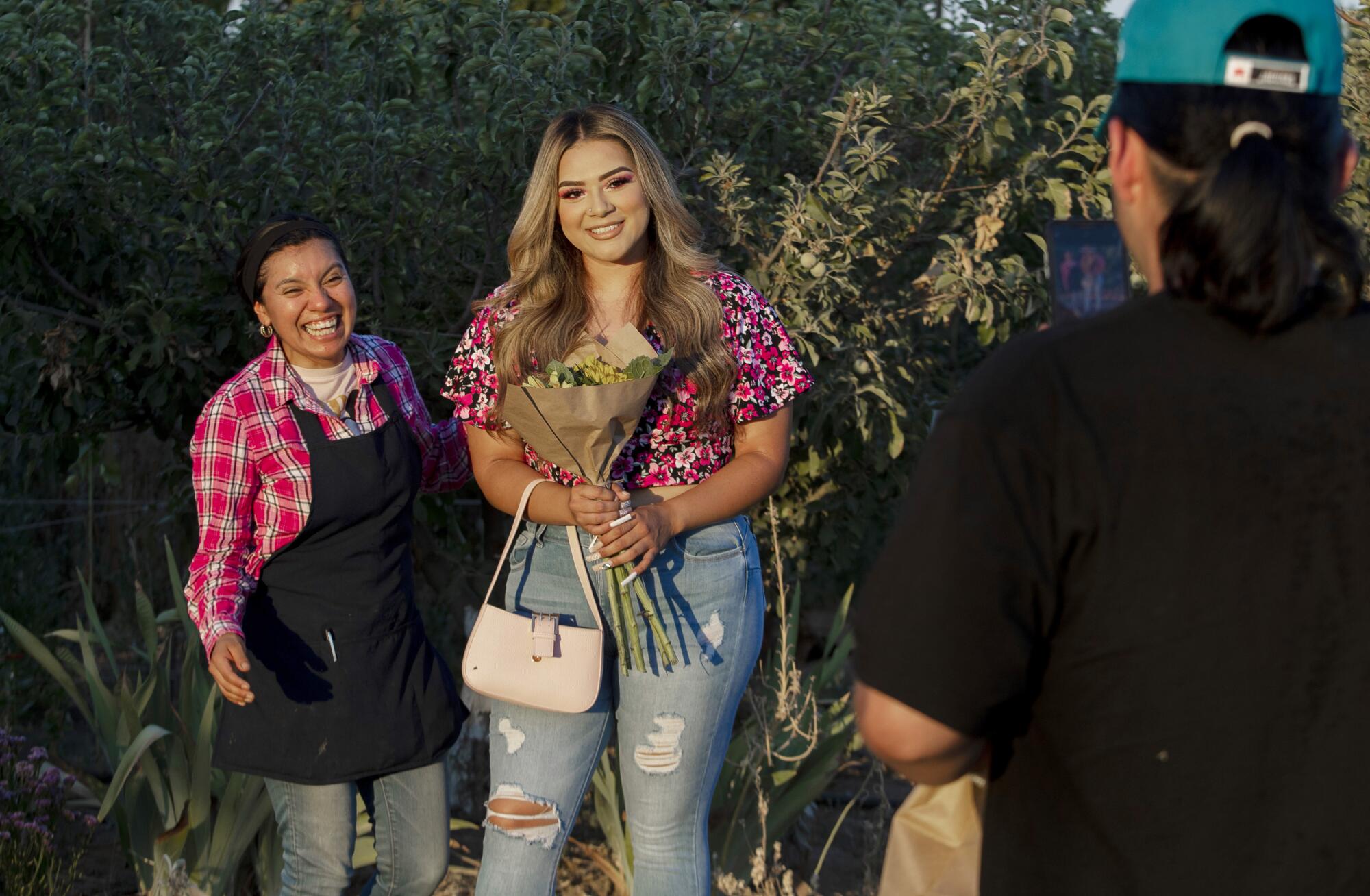
As she healed, she found she was happy and at peace outside on the farm and with her loved ones. Her parents had started building a farm stand. She asked to take it over and run her own business, and they gladly agreed, happy to have her home.
She grows flowers and vegetables and teamed with a local beekeeper to place bees in her orange grove, so she could sell blossom honey as pale as light.
On a recent day she simultaneously edited a video on choosing nectarines and adorned honey jars with labels she designed. Before walking into the scorching sun, she placed a big straw hat with a bow — a thrift store find — over her cap to draw water for fall flower seedlings that had barely turned into plants.
She had to choose what to water and what to let go, and she’d decided these were too far along to let die.
The rows between the fruit trees were a mad tangle of dead plants.
“Those were my onions, my beets, my dahlias, my broccoli, my okra, and my ‘purple dino’ kale,” she said, pointing. “All the yellow brush, that was my cilantro.”
It was 104 degrees, and this patch of ground hadn’t been watered since May, yet sunflowers twisted above the weeds and bloomed.

“Those poor sunflowers,” Garcia said. “I want to be resilient like them.”
Jonathan Grubbs and Kestrin Pantera stopped at the stand on their way to a mountain lake.
The COVID-19 pandemic had prompted the Los Angeles couple to make some changes and contemplate others. For one, Pantera never goes anywhere these days without the cat she found as a newborn in their laundry room last year. At the farm stand, she wore a striped romper and oversize sunglasses, and her fashion accessories included an over-the-shoulder cat-carrier containing Kika, her constant companion.
They also want to leave Los Angeles. On their drive to the Central Valley that day they discussed where to move in terms of drought and climate change, talking first about wine country.
“We had thought the Alexander Valley, but with the drought we might be moving to dead vineyards and the air could be gray with smoke,” Grubbs said.
“We took a trip to Shasta and it was terrifying,” Pantera said. “On one side, everything gone, and on the other, green.”
As they picked between heirloom peaches shaped like doughnuts, yellow nectarines and watermelons, Garcia asked if their worries would ruin their getaway.
“No. For me it’s about human resilience,” Grubbs said. “Climate change outweighs every other issue. I want to be doing everything I can. But sitting home being sad doesn’t change anything.”
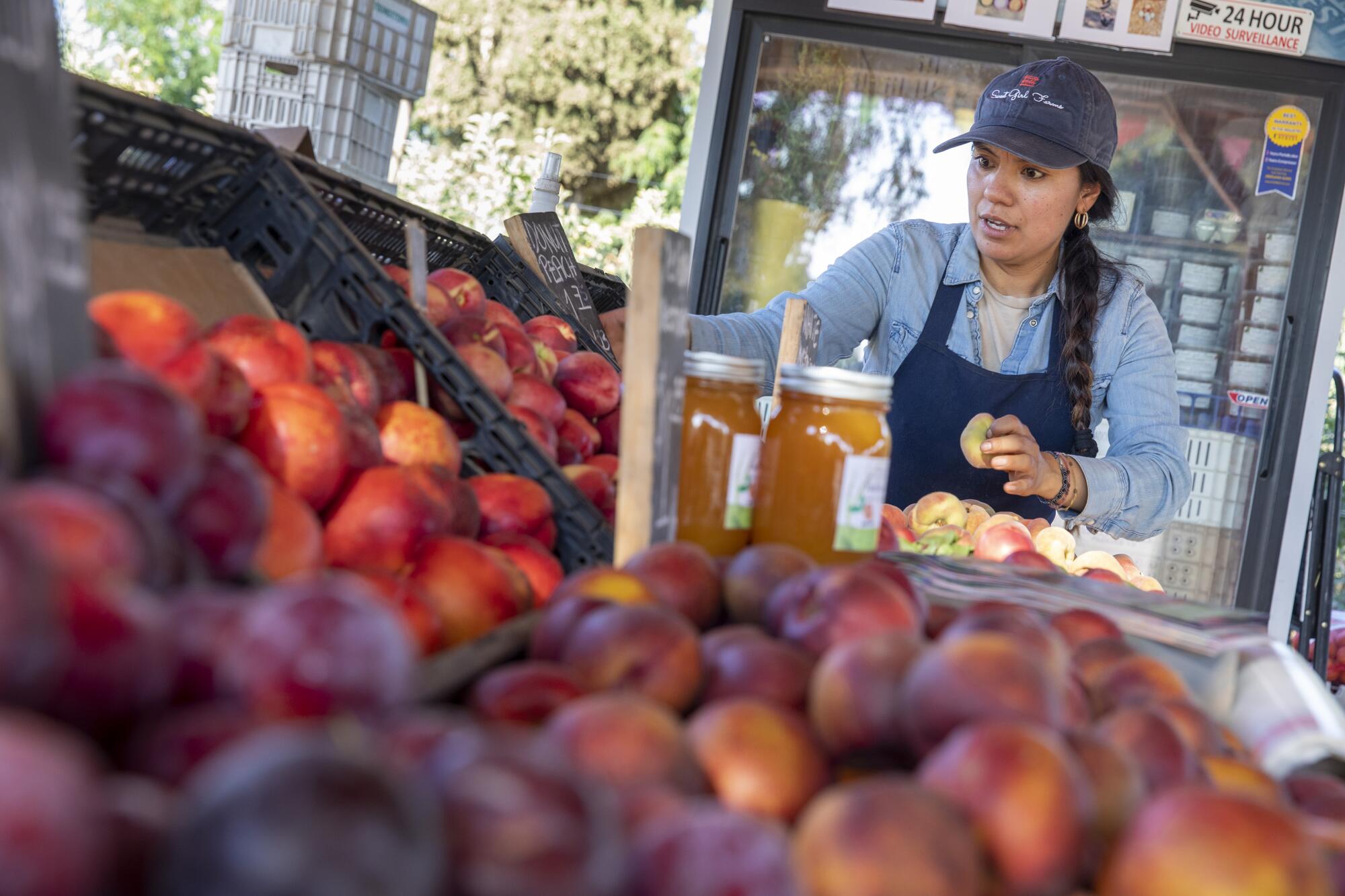
“Let’s get drunk tonight,” Pantera said. “As testament to the human spirit.”
Garcia next sold a watermelon to a neighbor, picking it out for him and listening intently when he told her he was taking it to the daughter he hadn’t seen in 12 years. A customer said she was going to make a melon sangria and Garcia asked for the recipe. Another farmer came by to buy peaches and warn that coyotes had been digging up drip lines to get water.
Mark Boykin, from Atlanta (“Ever been? Now there is a city” he said), dropped in mostly to say hello.
He had discovered Garcia on Instagram when he first moved back to Fresno, where he has family roots. He said her cheer helped him as he suffered culture shock. He drove 40 minutes to the farm stand to meet her in person. Now they’re friends and almost neighbors because he moved to Dinuba, just south of Reedley, after his landlord took advantage of sky-high real estate prices to sell the house he was renting in Fresno.
His real estate agent hadn’t thought he’d be interested in one of the developments popping up far from more urban Fresno.
“I thought ‘Well, that’s like one alley cat laughing at another alley cat — it’s all farm and dirt,” he said. “But I look around and think, ‘All these new houses in these farm towns. Where is the water coming from?’”
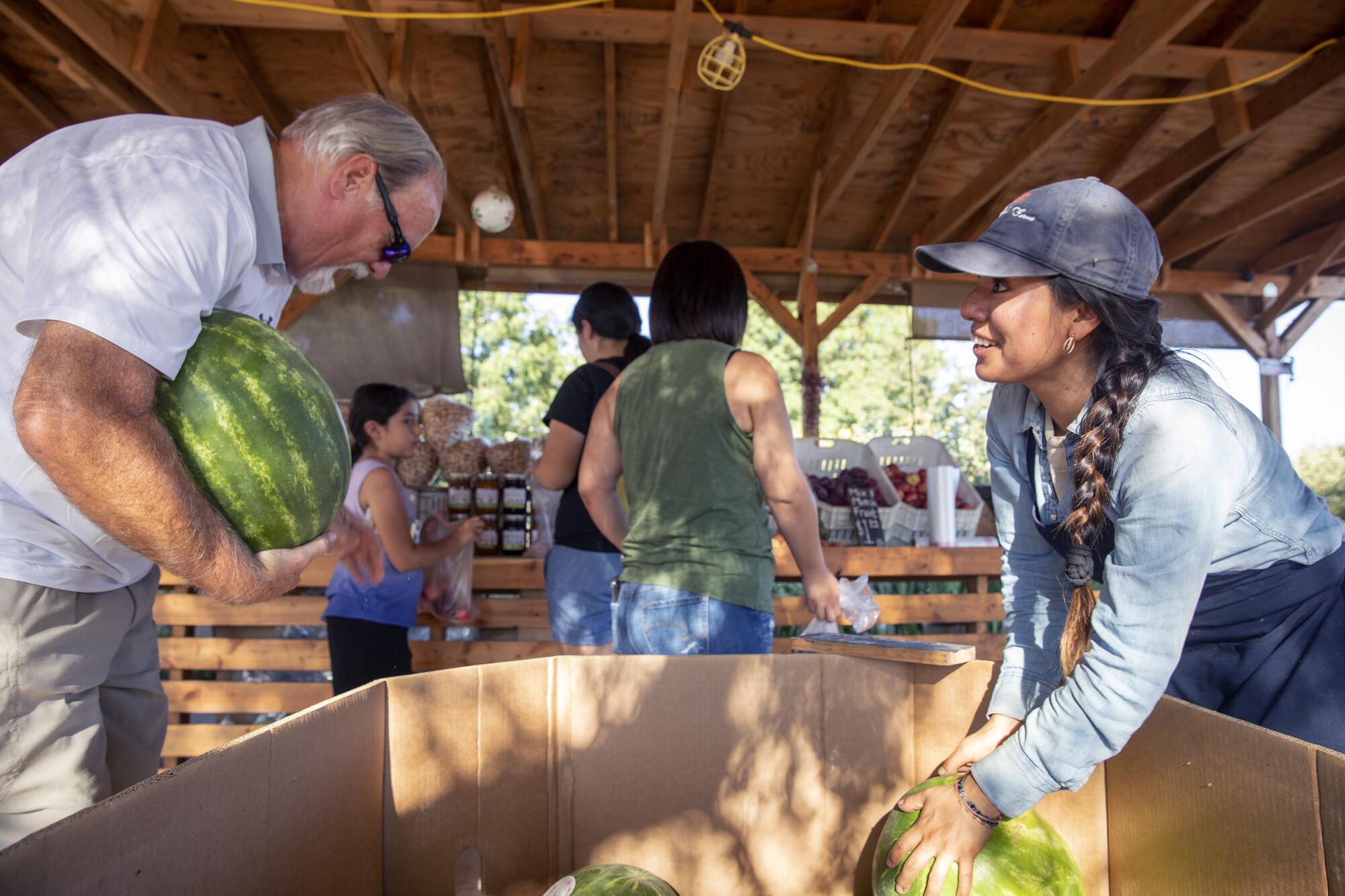
Questions such as that are common at the farm stand. The mix of locals, weekenders and tourists all seem to want to talk about water. Some people are mad at the governor. Others rail at Big Ag. Some want dams. Others warn there are no rivers left to dam, no snowmelt to capture, no water left to draw in the aquifer without untold consequence.
Garcia said she tries to never engage when there is anger or finger-pointing.
“What good does that do?” she asked. ”Most people are nice. Maybe we do have our differences, but we automatically divide ourselves without asking genuinely, ‘How are you?’ Everyone is worried right now.”
Some visit the farm stand out of pure chance. Gaye Kaplan was in her Los Angeles home watching an old rerun of “California’s Gold,” the TV show hosted by California’s favorite documentarian, the late Huell Howser. On this episode, he visited the Fresno County Blossom Trail, a self-guided tour past orchards, fields and fruit markets.
Kaplan had not been on any trip since the start of the pandemic.
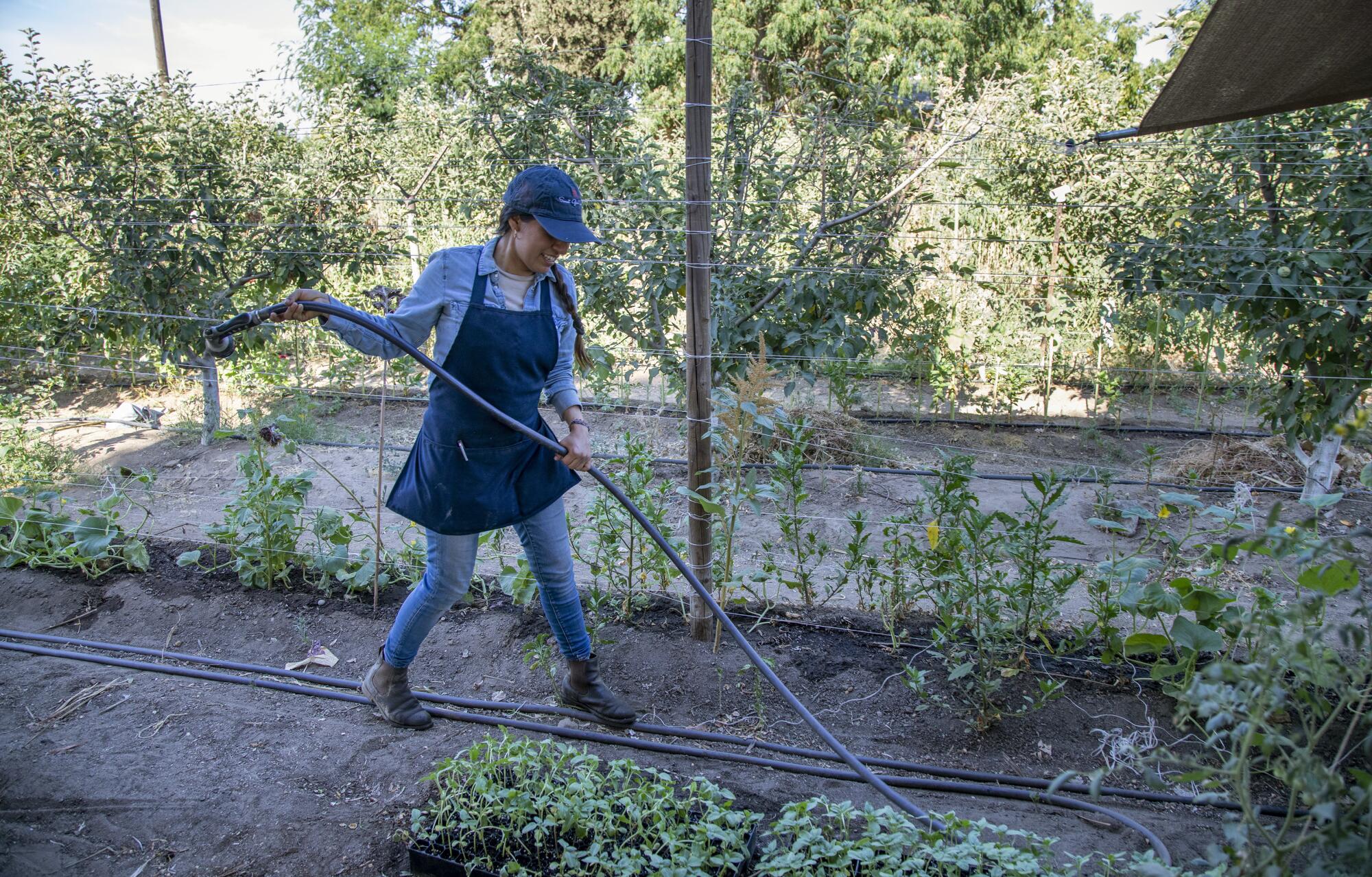
“It’s time to venture forth,” she announced to her husband and niece, and they drove almost five hours to “meet the people who grow our food.”
They also wanted to buy vegetables. Garcia had to send them to a different farm because her vegetables had all dried up. But not before she heard about their drive and all they had seen so far.

The day’s next-to-last customer was sad all the bouquets had been sold. Garcia picked three of the scruffy, hardy sunflowers, the only ones left not curling in the heat. The herbs and other flowers she might usually have added had died. She clipped a sprig from an apple tree and tied a bouquet with twine. It looked like one of her Instagram photos.
The last customer was the farmer across the street, who arrived on his tractor.
The coming days were expected to be even hotter than the low broil on this day that finally seemed to be tapering off. That gave Garcia an idea.
She sent out a social media blast that the farm stand would add night hours to her regular seven-days-a-week schedule.
It was the week of the stand’s second anniversary. She wasn’t certain of the future, but her business was here now, and she wanted to celebrate.
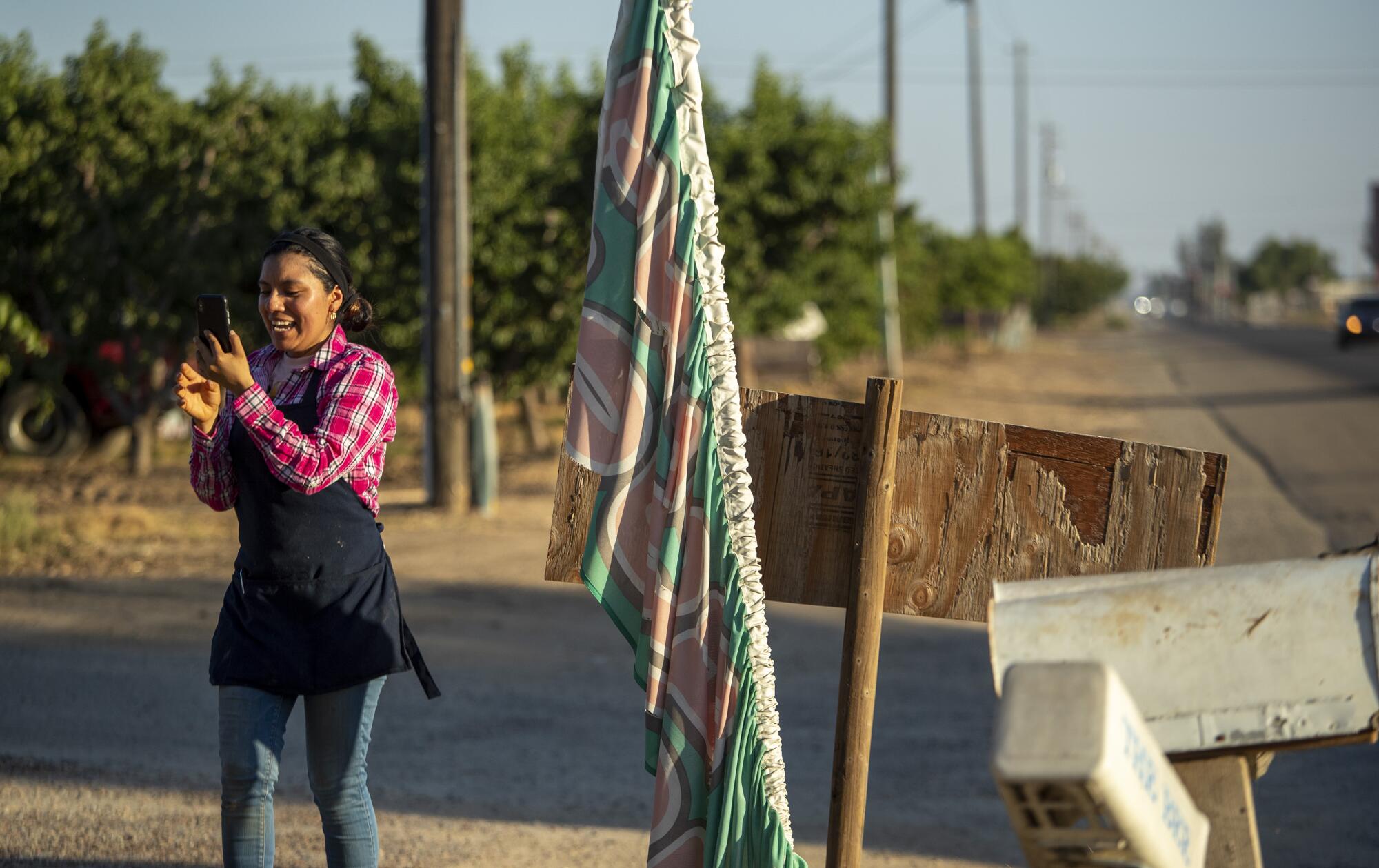
The next evening, the sky turned the color of her nectarines and peaches, and she served pineapple-cucumber-melon and strawberry-watermelon aguas frescas. Her mother cut up a watermelon and sprinkled its red-pink flesh with chile salt.
Garcia hustled around filling orders for a crowd. Out of the corner of her eye, she thought she caught a glimpse of people dancing.
More to Read
Sign up for Essential California
The most important California stories and recommendations in your inbox every morning.
You may occasionally receive promotional content from the Los Angeles Times.


